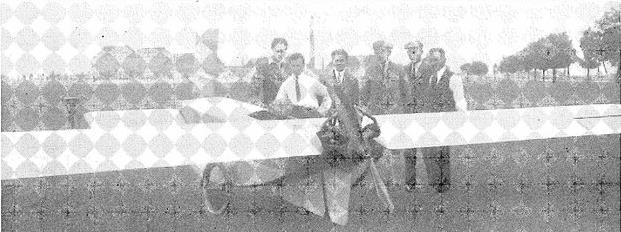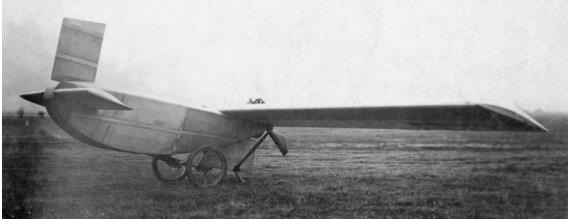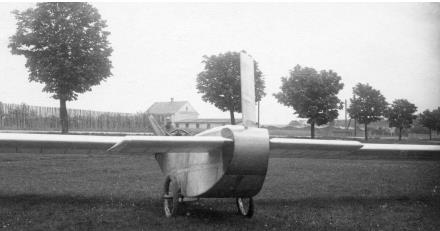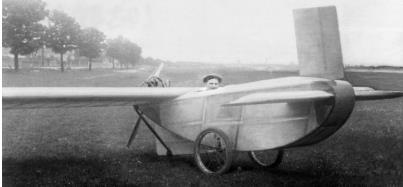| Type | |
| Engine | 1 Anzani |
| Dimensions | Length , height , span , wing area , |
| Weights | Empty , loaded , max. take off weight |
| Performance | Max.. speed , cruising speed , range , endurance , service ceiling , climb |
| Type | Werk.Nr | Registration | History |
It was a single-seat high-wing aircraft with a wooden construction and fabric covering. The fuselage was rectangular in cross-section; its top was straight, while the bottom was raised sharply in front and behind. The cantilevered wing had a rectangular shape and consisted of one piece. On its trailing edge were normal ailerons. The arrangement of the empennage looked quite unusual because Deicke not only moved the elevator control but also the rudder to the nose of the fuselage There were no elevators; the vertical fin was under the rear of the fuselage and also carried the drag skid.
An old Anzani three-cylinder of 30/35 hp, which was installed in the rear and a two-bladed wooden propeller, initially served as the drive source
In 1922 Deicke completed the machine. The first attempt to take off apparently ended in a crash, because the traffic report from the Munich-Oberwiesenfeld police air station for September 1922 stated under September 24, 1922: "Deike sports plane, Attempted flight, badly damaged on take-off". This report can actually only have referred to the “Ente” .
The real first flight did not take place until 1924, under the leadership of Richard Kern, then a pilot at the Udet works. More than a few extended "air jumps" were not successful, because the Anzani engine failed.
Due to lack of money, the flight tests had to be interrupted for a long time. It was not until 1926 that Deicke appeared in public again and announced the installation of its new light aircraft engine in the "Ente". The Deicke engine was a air-cooled two-cylinder, which worked in the two-stroke process and delivered an output of 25 hp.
Nothing has become known about the test results with the new engine and about the further fate of the Deicke "Ente".
An old Anzani three-cylinder of 30/35 hp, which was installed in the rear and a two-bladed wooden propeller, initially served as the drive source
In 1922 Deicke completed the machine. The first attempt to take off apparently ended in a crash, because the traffic report from the Munich-Oberwiesenfeld police air station for September 1922 stated under September 24, 1922: "Deike sports plane, Attempted flight, badly damaged on take-off". This report can actually only have referred to the “Ente” .
The real first flight did not take place until 1924, under the leadership of Richard Kern, then a pilot at the Udet works. More than a few extended "air jumps" were not successful, because the Anzani engine failed.
Due to lack of money, the flight tests had to be interrupted for a long time. It was not until 1926 that Deicke appeared in public again and announced the installation of its new light aircraft engine in the "Ente". The Deicke engine was a air-cooled two-cylinder, which worked in the two-stroke process and delivered an output of 25 hp.
Nothing has become known about the test results with the new engine and about the further fate of the Deicke "Ente".











